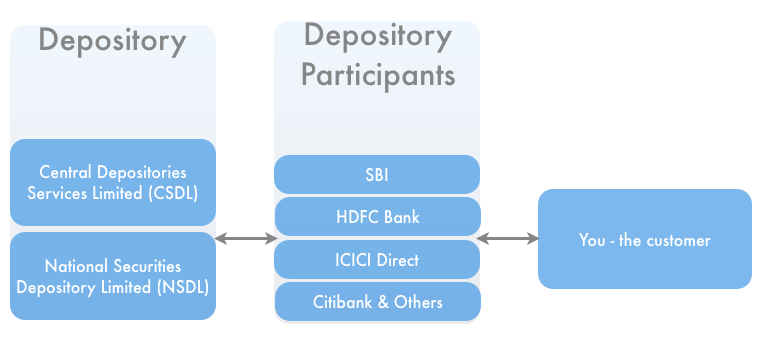
What is a Demat Account?
I got an email last week from someone asking about opening a demat account, and in the SBI and IDFC thread you might have noticed that there are several people who don’t have demat accounts, but will have to open one soon because nowadays you need one even to invest in these bond issues.Let’s start with what a Demat account is, and then we can move on to the several options currently available in India.
My grandpa used to have a black briefcase where he stored all his physical share certificates.
Eventually he dematerialized all his shares and moved them to an electronic briefcase, which is how he described his Demat account, and I think this is quite apt to understand the concept.
A Demat account is like a brief case where you store your shares and bonds electronically.
In India there are two Depositories – NSDL and CSDL – and you can think of these depositories as banks that hold your shares and bonds in electronic form.
A regular investor can’t deal with a depository directly, and you have to deal with their agents which are called Depository Participants (DPs).
There are hundreds of DPs in India, and you can open a demat account with one that suits you in terms of price and convenience. Normally, people open a Demat and a trading account with the same institution as it makes transactions cheaper, and is more convenient to get started as well.
So you could have a trading account and a DP account with SBI or ICICI Direct. It is in fact better to have trading and DP account with the same organization because in those cases you are waived off the DP transaction fees.
Effectively, you are using an agent in the form of a depository participant to avail the services of a depository which are storing your shares and bonds electronically.
There are hundreds of DPs in India, and NSDL provides a very comprehensive list of DPs along with their fees here and here (this data might not be up to date though).
Partial List of Depository Participants in India
If you clicked through the above links to the entire list of DPs then you’ll notice that there are a large number of DPs in India, so for this post I’m trying to create a list which has got some of the better known DP names with only their annual maintenance charges covered.There are several other charges, but including all of them here will make comparison difficult. I have included a link to the source in this table so you can go check the details there. Since these prices are relatively low – you should think about convenience also, and see if your bank offers demat services, and if you can open one there.
How to open a Demat account?
Once you decide where you want to open your Demat account – contact their representatives, and they will get you started.You will need the following documentation in order to open a Demat account, so keep this handy while contacting the DP.
Proof of Identity: This includes PAN card, driver’s license, passport, voter card etc.
Proof of Address: This includes the above documents and bank passbooks, identity cards issued by Centre or State governments etc.
Passport size photo
Pan card copy
You will need the following details while opening the demat account:
- Name of account holder
- Mailing address
- Bank account details
- Guardian details for minors
- Nomination declarations
- Standing instructions
It used to be that only equity investors cared about having a demat account, but with a lot of bond issues coming out in only demat form – I think more and more investors will need to open a demat account, and if you don’t already have one, then do think about spending this four or five hundred bucks per year to take advantage of electronic stock and bond holding.
No comments:
Post a Comment